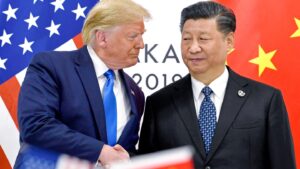The Dictatorship
Chuck Schumer still has plentiful options for stalling Trump
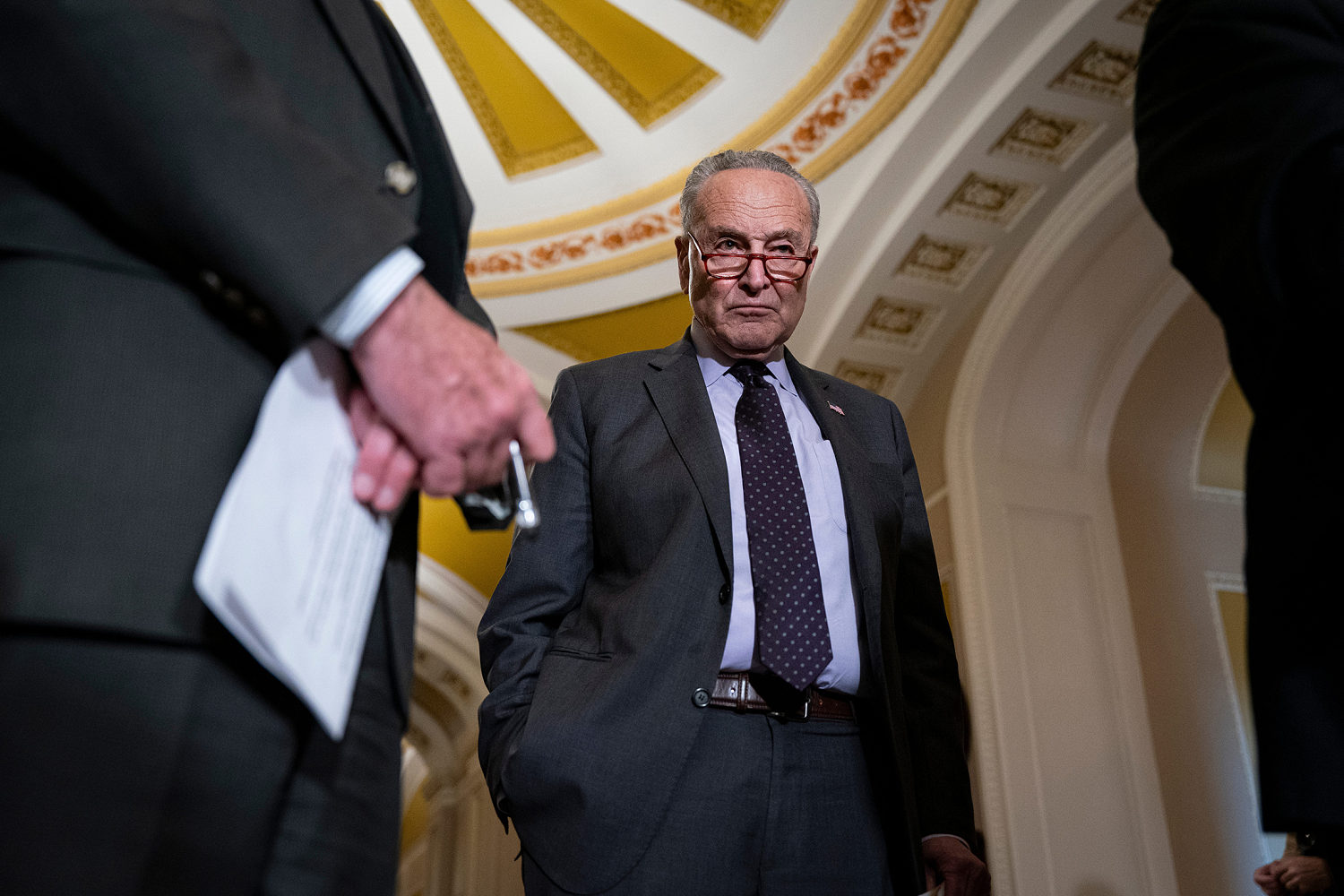
As the Trump administration continues to smash a metaphorical wrecking ball into the federal government, many congressional Democrats seem to have embraced the role of passive observers. In response to a vocal base wondering why they aren’t doing more, Democrats, who have minority representation in both chambers of Congress, have at times complained that they lack power and leverage to act forcefully. There’s some truth to that sentiment — but it illustrates a lack of tactical creativity and a strategic certainty.
It’s true, as House Minority Leader Hakeem Jeffries, D-N.Y., lamented last week, that the House’s rules are set up to benefit whoever can muster a majority, even if it’s only by one vote. The most leverage House Democrats can use then depends on peeling off support from a Republican caucus that is largely in lockstep. In the Senate, though, Senate Minority Leader Chuck Schumer, D-N.Y., has more plentiful options for stalling President Donald Trump’s agenda — and he’s barely used any.
There is another option for, if not totally stopping things, at least slowing things to a crawl.
For better or for worse, the Senate’s rules are designed to empower individual senators and those members who find themselves in the minority on an issue. In general, those rules are meant to keep the debate flowing among the Senate’s members, but there are two mechanisms on opposite ends of the spectrum that are designed to either speed things up or slow them down. Most of the focus in recent years has been on the filibusterwhich requires a vote of 60 senators to end debate and force a vote on almost any substantive matter.
It remains my belief that the filibuster is an antidemocratic tool that doesn’t serve as the bulwark against extremism its defenders say it does, as much as it’s used to shelter abuses of Americans’ rights and prevent positive change. But there is another option for, if not totally stopping things, at least slowing things to a crawl. Much of the Senate’s work is measured in floor hours, the amount of time a bit of business must be debated before a vote can be held on it. If the filibuster is the spanner in the works, meant to grind things to a halt in the Senate, “unanimous consent” is the grease that keeps the gears turning smoothly.
Here’s how I previously described unanimous consent agreementswhich generally involve a senator telling the chair, “I ask unanimous consent for” whatever they are proposing: “Such agreements basically operate on the assumption that all 100 senators are totally fine with whatever action is being proposed, no vote needed. The most basic unanimous consent agreement can be used to insert items into the Congressional Record; the most complicated can line up weeks’ worth of legislative action in the time it takes to read out the agreement.” It only takes one senator’s disagreement to nip those agreements in the bud though making it a primed weapon for obstruction, especially when it comes to speedily working through a raft of nominations.
In 2022, then-Senate Minority Leader Mitch McConnell, R-Ky., was threatening to all but shut down the Senate if Democrats overturned the legislative filibuster to pass a voting rights bill. If he’d followed through with his threat, it would have been a massive headache for Democrats, but also for Republicans. Rejecting a unanimous consent agreement can add hours of debate time from the calendar, as the majority leader often uses lengthy requests to set up even short recesses, general administrative business like approving the Senate Journal’s records and other parliamentary necessities. If each of the mundane tasks usually covered by unanimous consent required a vote, it would also require a majority of the Senate to be present which, if you ever watch C-SPAN 2, you know is a rarity.
Schumer has been reluctant to encourage his members to oppose every unanimous consent request. That’s led though to moments like we saw last week during the leadup to the Senate voting on Tulsi Gabbard and Robert F. Kennedy Jr.’s confirmation. Sen. John Kennedy, R-La., was positively giddy last Tuesday night as he read out the text of a request that allowed for Gabbard’s vote to take place the next morning and cut the post-cloture debate time for Kennedy’s nomination. There was no objection from Senate Democrats, prompting major frustration from supporters who want Democrats to act more like an opposition party.
Schumer has been reluctant to encourage his members to oppose every unanimous consent request.
Tactically speaking, there would be a clear benefit in Schumer pulling every lever possible to make the process of legislating more difficult for his counterpart, Sen. John Thune of South Dakota. Forcing votes on even the little things and requiring Republicans to stay on the Senate floor to keep processes moving would at least be something in the face of Trump’s threatened usurpation of congressional powers. It would also require some sacrifice from his members, who have gotten used to heading home on Thursday afternoons, and some of whom still hope to maintain a measure of comity with their GOP colleagues.
I can see, though, the risk of placing too much emphasis on tactics over a broader strategy. The decision to hold all-night debates arguing against Russel Vought’s confirmation as the head of the Office of Management and Budget makes sense tactically. But it’s impossible to promote such a delay as a victory when the GOP is still able to run out the clock and vote on whatever they want. The same would apply to Schumer pulling the ripcord and rotating in a senator to disapprove of any and all unanimous consent requests. It would be frustrating for Republicans in the short run, potentially even limit some of the damage done in the long run, but can still be overcome with little more than patience from Republicans.
Moreover, the internal debate over tactics is only possible because Democrats still lack an overall strategic goal. When the year began, Schumer argued that allowing some nominations to proceed and making a fuss about the more controversial ones would show that Democrats were being reasonable. As the chaos has grown, that idea has been abandonedbut there’s still reluctance to be seen as an obstacle versus putting forward a more focused economic message.
In contrast, the Senate GOP under McConnell had a simple strategy: Regain and maintain power — period. During the Obama era, that looked like Republicans making sure the Senate became the “graveyard of legislation.” There is no similar agreement as to what that should look for Democrats like under the Trump regime, even as it becomes clear that there’s little that he could do that will cause his legislative allies to cross the aisle in defense of the country. It’s up to Democrats then to decide — and fast — what they want to do over the next two years: hope that Trump will fail and rebuild later, or work to ensure that he fails and preserve as much as possible.
Hayes Brown is a writer and editor for BLN Daily, where he helps frame the news of the day for readers. He was previously at BuzzFeed News and holds a degree in international relations from Michigan State University.
The Dictatorship
Trump urges Israel to seize chance for peace ahead of Egypt summit and presses for Netanyahu pardon

SHARM EL SHEIKH, Egypt (AP) — President Donald Trump called for a new era of harmony in the Middle East on Monday during a global summit on Gaza’s futuretrying to advance broader peace in the region after visiting Israel to celebrate a U.S.-brokered ceasefire with Hamas.
“We have a once-in-a-lifetime chance to put the old feuds and bitter hatreds behind us,” Trump said, and he urged leaders “to declare that our future will not be ruled by the fights of generations past.”
The whirlwind trip, which included the summit in Egypt and a speech at the Knesset in Jerusalem earlier in the day, comes at a fragile moment of hope for ending two years of war between Israel and Hamas.
“Everybody said it’s not possible to do. And it’s going to happen. And it is happening before your very eyes,” Trump said alongside Egyptian President Abdel Fattah el-Sissi.
Nearly three dozen countries, including some from Europe and the Middle East, were represented at the summit. Israeli Prime Minister Benjamin Netanyahu was invited but declined, with his office saying it was too close to a Jewish holiday.
Trump, el-Sissi, Turkish President Recep Tayyip Erdogan and Qatari Emir Tamim bin Hamad Al Thani signed a document outlining a broad vision that Trump said would lay the groundwork for Gaza’s future.
Despite unanswered questions about next steps in the Palestinian enclave, which has been devastated during the conflictTrump is determined to seize an opportunity to chase an elusive regional harmony.
He expressed a similar sense of finality about the Israel-Hamas war in his speech at the Knesset, which welcomed him as a hero.
“You’ve won,” he told Israeli lawmakers. “Now it is time to translate these victories against terrorists on the battlefield into the ultimate prize of peace and prosperity for the entire Middle East.”
Trump promised to help rebuild Gaza, and he urged Palestinians to “turn forever from the path of terror and violence.”
“After tremendous pain and death and hardship,” he said, “now is the time to concentrate on building their people up instead of trying to tear Israel down.”
Trump even made a gesture to Iran, where he bombed three nuclear sites during the country’s brief war with Israel earlier this year, by saying “the hand of friendship and cooperation is always open.”
Trump’s whirlwind trip
Trump arrived in Egypt hours late because speeches at the Knesset continued longer than expected.
“They might not be there by the time I get there, but we’ll give it a shot,” Trump joked after needling Israeli leaders for talking so much.
Twenty hostages were released Monday as part of an agreement intended to end the war that began on Oct. 7, 2023, with an attack by Hamas-led militants. Trump talked with some of their families at the Knesset.
“Your name will be remembered to generations,” a woman told him.
Israeli lawmakers chanted Trump’s name and gave him standing ovation after standing ovation. Some people in the audience wore red hats that resembled his “Make America Great Again” caps, although these versions said “Trump, The Peace President.”
Netanyahu hailed Trump as “the greatest friend Israel has ever had in the White House,” and he promised to work with him going forward.
“Mr. President, you are committed to this peace. I am committed to this peace,” he said. “And together, Mr. President, we will achieve this peace.”
Trump, in an unexpected detour during his speech, called on the Israeli president to pardon Netanyahu, whom he described as “one of the greatest” wartime leaders. Netanyahu faces corruption chargesalthough several hearings have been postponed during the conflict with Hamas.
The Republican president also used the opportunity to settle political scores and thank his supporters, criticizing Democratic predecessors and praising a top donor, Miriam Adelsonin the audience.
Trump pushes to reshape the region
The moment remains fragile, with Israel and Hamas still in the early stages of implementing the first phase of Trump’s plan.
The first phase of the ceasefire agreement calls for the release of the final hostages held by Hamas; the release of hundreds of Palestinian prisoners held by Israel; a surge of humanitarian aid to Gaza; and a partial pullback by Israeli forces from Gaza’s main cities.
Trump has said there’s a window to reshape the region and reset long-fraught relations between Israel and its Arab neighbors.
“The war is over, OK?” Trump told reporters traveling with him aboard Air Force One.
“I think people are tired of it,” he said, emphasizing that he believed the ceasefire would hold because of that.
He said the chance of peace was enabled by his Republican administration’s support of Israel’s decimation of Iranian proxies, including Hamas in Gaza and Hezbollah in Lebanon.
The White House said momentum is also building because Arab and Muslim states are demonstrating a renewed focus on resolving the broader, decades-long Israeli-Palestinian conflict and, in some cases, deepening relations with the United States.
In February, Trump had predicted that Gaza could be redeveloped into what he called “the Riviera of the Middle East.” But on Sunday aboard Air Force One, he was more circumspect.
“I don’t know about the Riviera for a while,” Trump said. “It’s blasted. This is like a demolition site.” But he said he hoped to one day visit the territory. “I’d like to put my feet on it, at least,” he said.
The sides have not agreed on Gaza’s postwar governance, the territory’s reconstruction and Israel’s demand that Hamas disarm. Negotiations over those issues could break down, and Israel has hinted it may resume military operations if its demands are not met.
Much of Gaza has been reduced to rubbleand the territory’s roughly 2 million residents continue to struggle in desperate conditions. Under the deal, Israel agreed to reopen five border crossings, which will help ease the flow of food and other supplies into Gaza, parts of which are experiencing famine.
Roughly 200 U.S. troops will help support and monitor the ceasefire deal as part of a team that includes partner nations, nongovernmental organizations and private-sector players.
___
Megerian reported from Washington. Associated Press writers Will Weissert and Seung Min Kim in Washington contributed to this report.
___
Follow the AP’s coverage of the Israel-Hamas war at https://apnews.com/hub/israel-hamas-war.
The Dictatorship
Naked bike riders demonstrate against troops in Portland…

PORTLAND, Ore. (AP) — Protesters rallying against the Trump administration in Portland put the city’s quirky and irreverent reputation on display Sunday by pedaling through the streets wearing absolutely nothing — or close to it — in an “emergency” edition of the annual World Naked Bike Ride.
Crowds that have gathered daily and nightly outside the immigration facility in Oregon’s largest city in recent days have embraced the absurd, donning inflatable frog, unicorn, axolotl and banana costumes as they face off with federal law enforcement who often deploy tear gas and pepper balls.
The bike ride is an annual tradition that usually happens in the summer, but organizers of this weekend’s hastily called event said another nude ride was necessary to speak out against President Donald Trump’s attempts to mobilize the National Guard to quell protests.
Rider Janene King called the nude ride a “quintessentially Portland way to protest.”
The 51-year-old was naked except for wool socks, a wig and a hat. She sipped hot tea and said she was unbothered by the steady rain and temperatures in the mid-50s (about 12 Celsius).
“We definitely do not want troops coming into our city,” King said.
Bike riders made their way through the streets and to the city’s U.S. Immigration and Customs Enforcement building. Authorities there ordered people to stay out of the street and protest only on sidewalks or risk being arrested.
The city is awaiting the ruling of an appeals court panel on whether Trump can send out the federalized troops after a federal judge on Oct. 5 ordered a temporary hold on deployment.
“Joy is a form of protest. Being together with mutual respect and kindness is a form of protest,” the ride’s organizers said on Instagram. “It’s your choice how much or little you wear.”
Fewer people were fully naked than usual — likely because of the cool, wet weather — but some still bared it all and rode wearing only bike helmets.
Naked bike rides have thronged the streets of Oregon’s largest city every year since 2004, often holding up traffic as the crowd cycles through with speakers playing music. Some years have drawn roughly 10,000 riders, according to Portland World Naked Bike Ride.
___
Weber reported from Los Angeles.
The Dictatorship
China calls for US to withdraw tariff threat
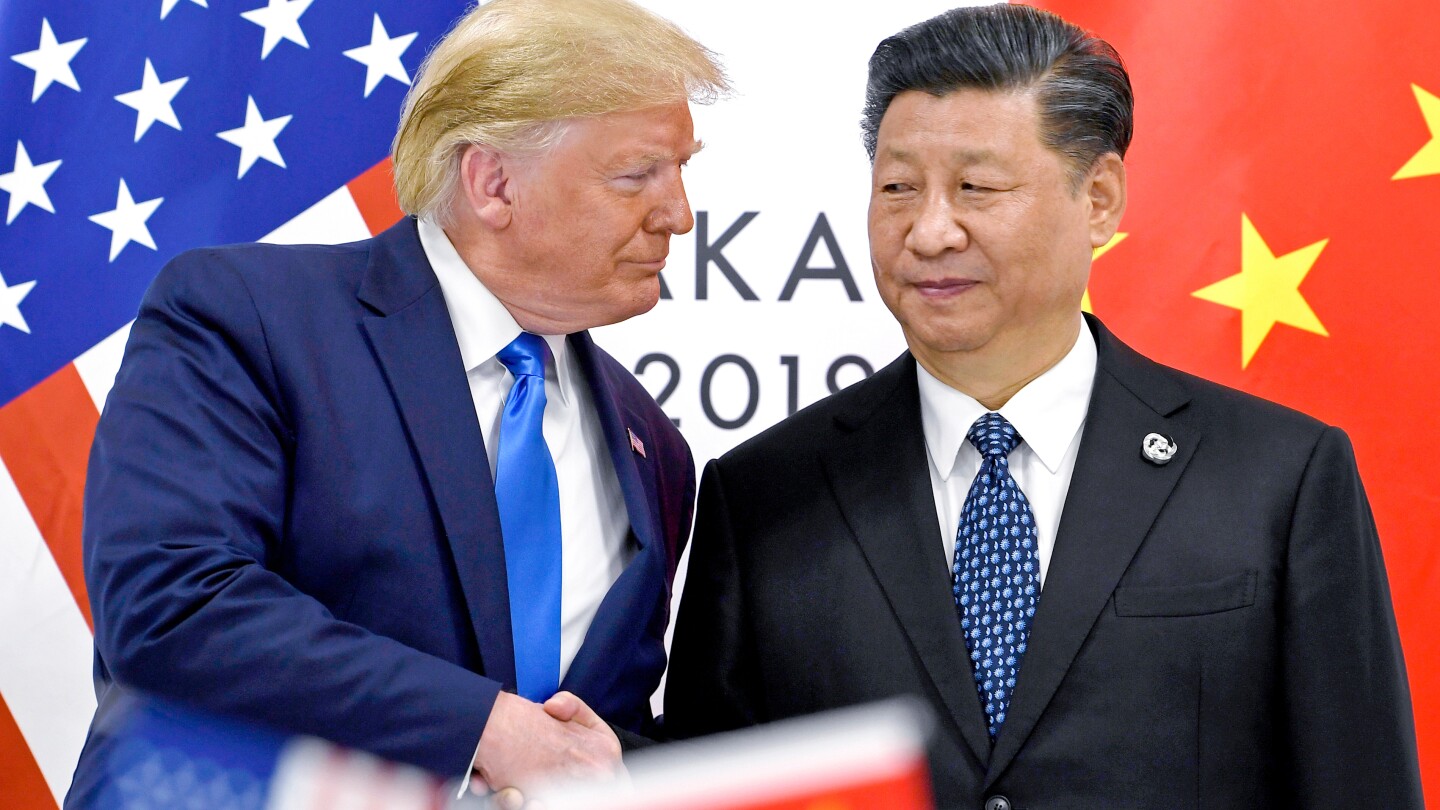
BANGKOK (AP) — China did not back down Monday in a back-and-forth with the U.S. over trade, calling for U.S. President Donald Trump to withdraw his latest threat of a 100% tariff and other export control measures announced over the weekend.
In the latest escalation of the trade war between the two nations, Trump issued the tariff threat on all Chinese imports into the U.S. after China placed stricter restrictions Thursday on rare earths, a vital resource used in electronics.
The Chinese announcement was an apparent surprise to Trump, who called it an “out of the blue” move. While Trump did not withdraw the economic threat, he sounded more conciliatory than in the past, saying in a Truth Social post Sunday, “The U.S.A. wants to help China, not hurt it!!!”
China’s Ministry of Commerce issued a lengthy response Sunday saying the U.S. was “severely damaging the atmosphere of trade negotiations.”
“China urges the U.S. to promptly correct its erroneous practices,” Chinese Ministry of Foreign Affairs spokesman Lin Jian said Monday. “If the U.S. insists on going its own way, China will certainly take resolute measures to safeguard its legitimate rights and interests.”
Both nations have leveraged multiple dimensions of the trade relationship in the trade war, with actions ranging from U.S. restrictions on China’s ability to import advanced computer chips, China ending purchases of American soybeans and an exchange of tit-for-tat port fees.
Economic indicators show the retaliatory actions and uncertainty are impacting trade between the countries. Chinese trade data release Monday showed exports to the U.S. have fallen for six straight months, dropping 27% in September from the year before.
-
Uncategorized11 months ago
Bob Good to step down as Freedom Caucus chair this week
-
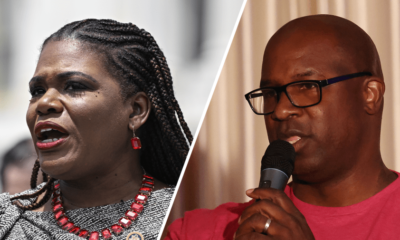
 Politics8 months ago
Politics8 months agoFormer ‘Squad’ members launching ‘Bowman and Bush’ YouTube show
-

 The Josh Fourrier Show11 months ago
The Josh Fourrier Show11 months agoDOOMSDAY: Trump won, now what?
-

 The Dictatorship8 months ago
The Dictatorship8 months agoPete Hegseth’s tenure at the Pentagon goes from bad to worse
-

 The Dictatorship8 months ago
The Dictatorship8 months agoLuigi Mangione acknowledges public support in first official statement since arrest
-
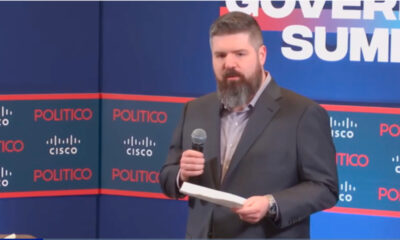
 Politics8 months ago
Politics8 months agoBlue Light News’s Editorial Director Ryan Hutchins speaks at Blue Light News’s 2025 Governors Summit
-
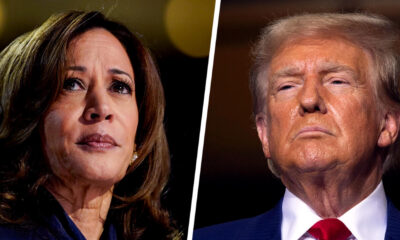
 Politics11 months ago
Politics11 months agoWhat 7 political experts will be watching at Tuesday’s debate
-

 Politics8 months ago
Politics8 months agoFormer Kentucky AG Daniel Cameron launches Senate bid






